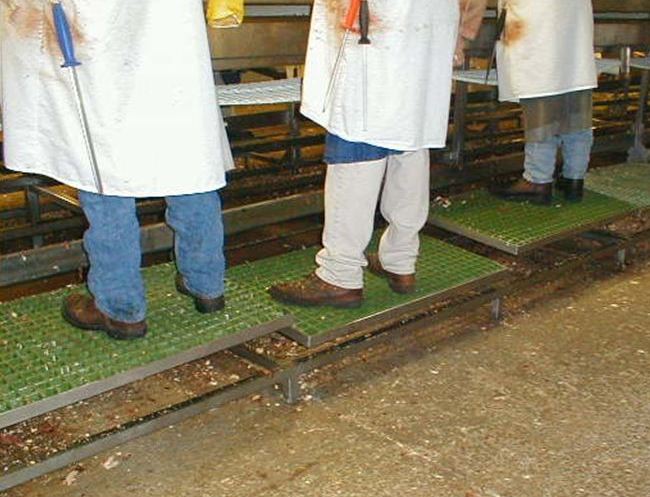 |
| Adjustable stands on meat processing line |
Principles affected
Related pages
Material handling
(height adjustable)
Workstations
Maintenance
- High work platforms
Background
It is generally best to raise the work up and down, rather than the person. However, when working at heavy machinery and similar large items, or when several people work on a production line, usually the only feasible approach is to use a platform.
Platforms are clearly a second-best option for several reasons:
- potential trip and fall hazards, especially stepping backwards off the platform
- repetitively stepping up and down, a source of knee disorders in workplaces with heavy use of platforms
- added congestion to the work area
Note that when platforms are used for production lines like that shown above, the height is usually established with taller people in mind, since it is possible to raise shorter-statured people up, but very difficult to lower tall people down (into the concrete).
Objectives
Raise people up to good working height when it is not possible to raise or lower the work being performed.
Ideas and Options
Basic
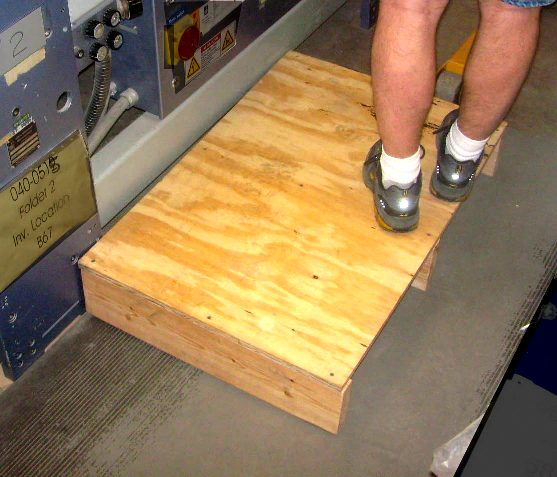 |
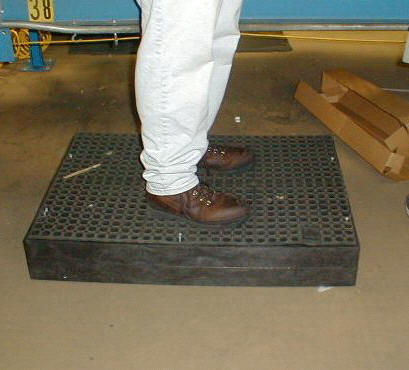 |
| Plywood | Plastic |
The simplest type of platform is a fixed-height stand, often constructed in-house using plywood. Plastic and metal versions are commercially available from a large number of industrial supply houses or purveyors of material handling equipment (commonly categorized as “work platforms”). The height is usually about six inches and the surface area about three feet square.
These platforms work best in situations where only one person works at a station and there is little need to move. In addition to concerns for tripping, falling, and repetitive stepping up and down, the biggest drawback is the need to move the platform if a taller person needs to work in that station. Bending and lifting is required, especially difficult with plywood. Typically, there is no convenient storage location for an unused platform.
Handles
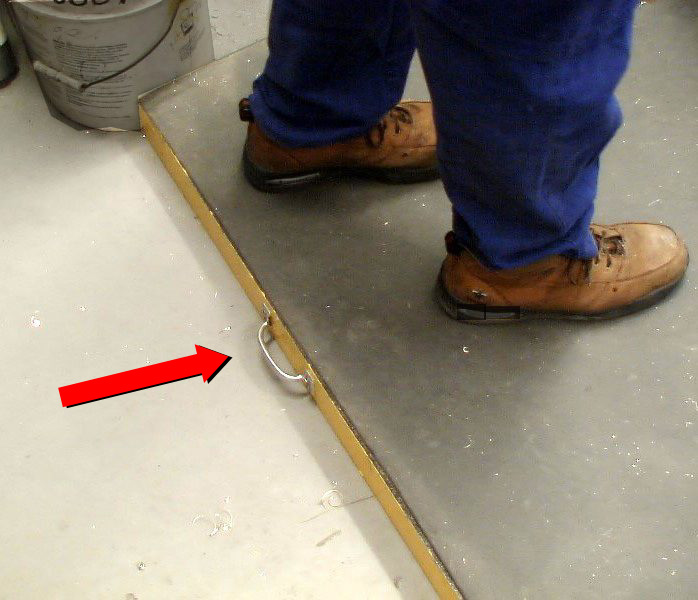 |
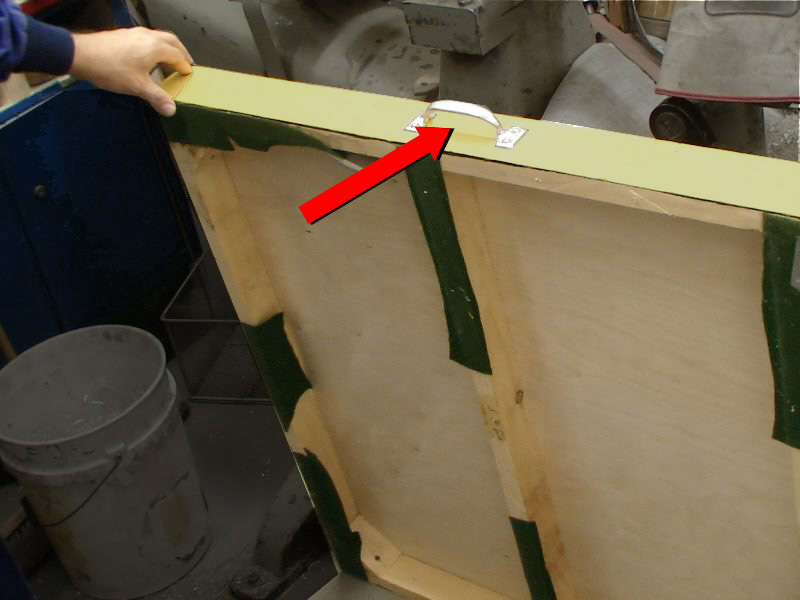 |
| Handle on platform | |
Attaching a handle can be helpful as an aid to picking up and storing the platform. Bending and lifting is still required, but the handle helps.
Ultra lightweight
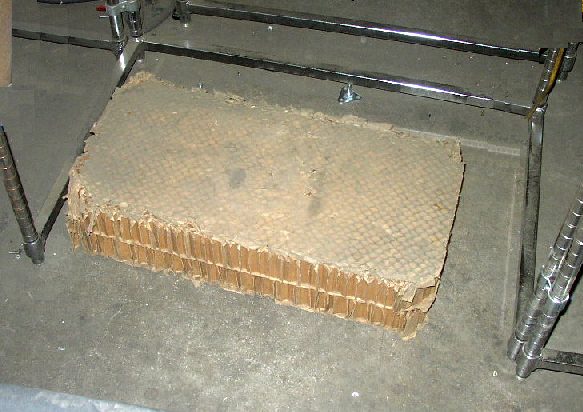 |
| Honeycombed cardboard platform |
Some lightweight materials that are relatively strong are sometimes used, often as a result of employees finding packing materials and spontaneously using it for this purpose. Honeycombed cardboard is the most common example, which is surprisingly strong when standing in the center of the block. Yet it is light enough to move easily, which is its primary advantage. The edges crumble after a time, but under these circumstances replacement is free and easy.
Stackable
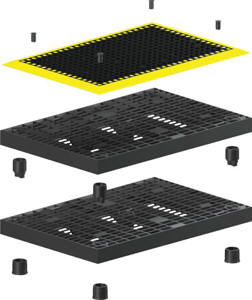 |
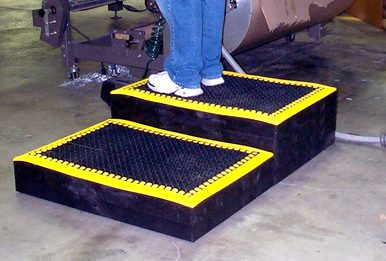 |
| “Add-a-level”, Ergobuyer | |
Stackable versions provide adjustable heights. Sections are lightweight, but bending, removal, and storage is still required when a tall person uses the station.
Adjustable rack styles
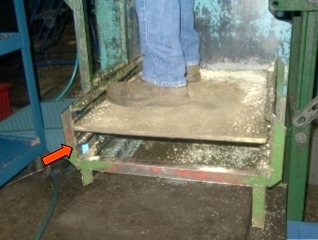 |
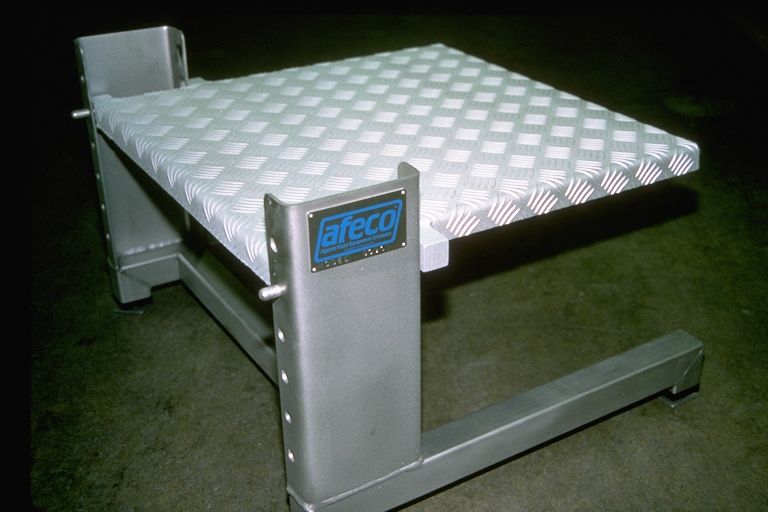 |
| “Oven rack” design | Peg rack design www.afeco.com (stainless steel for food industry) |
Various rack styles allow for different heights, with the lowest level designed for the tallest person, so that the platforms do not need to be ever moved. Bending and lifting is still necessary to change the heights, The photo above left is home made in a machine shop. The plywood sheet becomes saturated with coolant oil after a time, which makes it heavy to lift and reposition, so must be replaced occasionally.
Drop down
 |
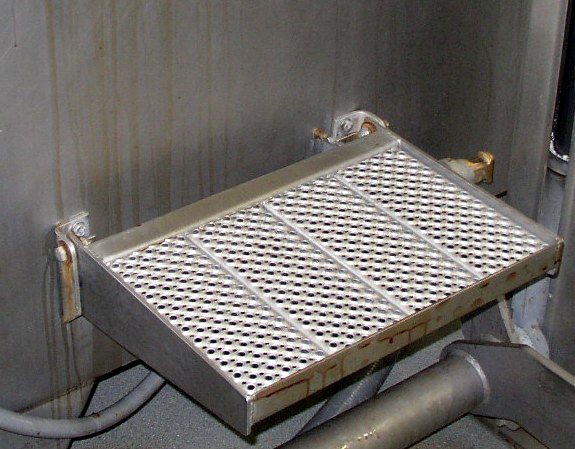 |
| Platform attached to side of machine with hinges | |
Adding a hinge to the platform provides several advantages: automatic storage space when not needed, no need to lift the entire weight of the platform, and ability to accommodate different sized people. The example shown above is a step used to access a portion of a large machine. The concept can be adapted for a larger platform.
Swing out
 |
 |
| Swing out platform in position | Platform pushed away |
Swing out platforms are mounted on a swivel post or large hinge, which permits them to be easily swung in and out of position as needed. This style of work platform is convenient, but requires sufficient space immediately adjacent to it point of use.
Hand crank
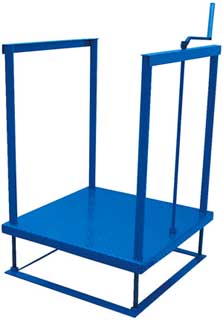 |
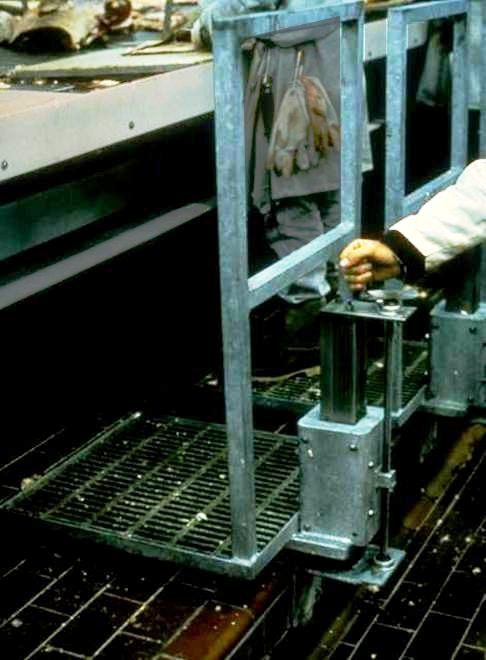 |
| Posicrankwww.vestilmfg.com | Hand crank on meat processing line |
Cranks provide height adjustment without the need to bend and lift the platform to reposition it. Usually this approach works best for infrequent changes, such as adjusting for an individual at the start of a shift. The height of the work, such as shown in the production line above right, should be set for a tall person when the platform is at its lowest level. Note the guard rails to prevent stepping backward off the stand in both examples above.
Portable step platforms
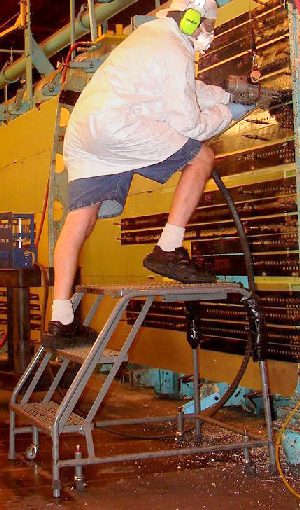 |
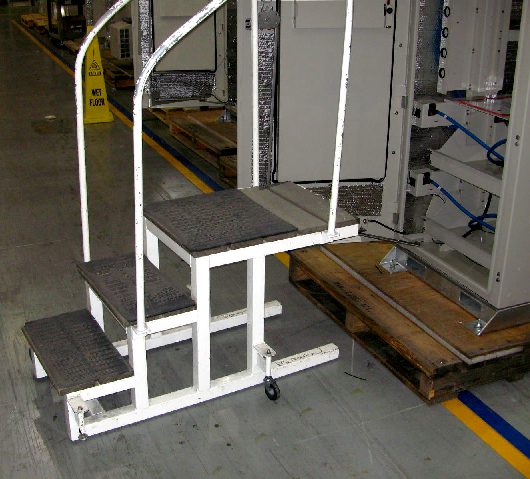 |
| Step platforms with retractable wheels | |
Portable step platforms are common and are available for a number of height levels. These platforms are easy to move, using spring-loaded casters that recess when weight is applied. Step platforms work best when the top level is the position needed for work. Disadvantages include the following: When the mid-level steps are used, the employee is positioned further away from the work, creating an awkward working position (as shown above left). The additional steps can increase the risk for knee disorders if used repetitively. Carrying tools and equipment up and down worsens the problem. Note the guard rails in the right-hand photo, a good feature.
Expansive
Large work areas
 |
 |
| Large work area platform | |
When working on tall items is routine, building a large area platform provides a number of advantages. Tools and equipment can be located at that level, reducing the need to go up and down steps. Fall and trip hazards are eliminated, other than at the steps themselves. This approach lacks adjustability, but can be especially helpful when the work being performed is roughly at the same height.
Platform expansions
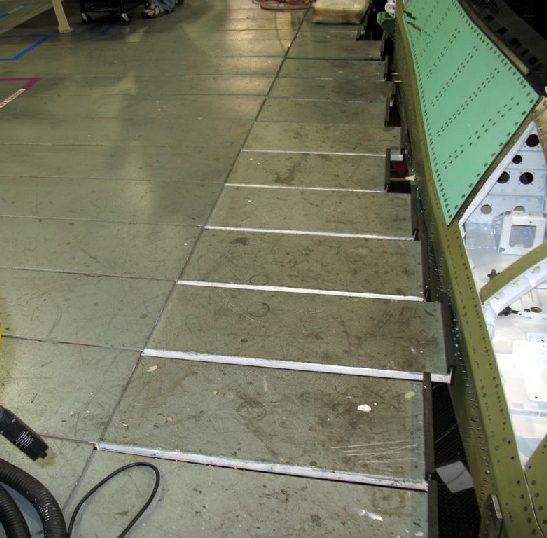 |
| Platform slideouts |
The aircraft industry often uses large permanent platforms at a mezzanine level in order to access the upper portions of the fuselage. Slideout sections are incorporated into the edge of these platforms that are retracted to move the aircraft. Each section can be extended to a different length to accommodate curved sections of the airplane.
Powered
Powered, large
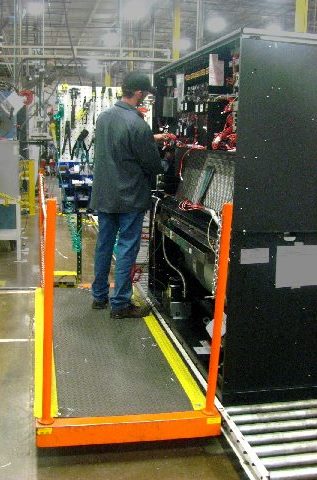 |
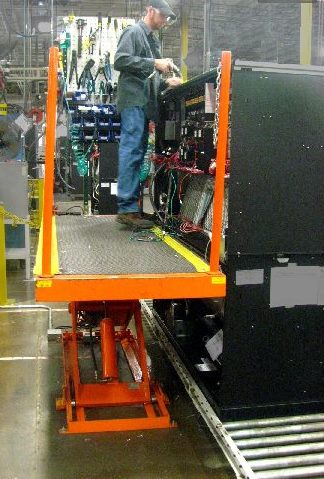 |
| Platform mounted on scissors lift | |
An increasingly common option is to use powered lifts, since they surmount a number of the shortcomings of other types of platforms:
- The platform can be adjusted with precision to any height.
- Repetitive use of steps is eliminated, saving both time and strain on knees.
- Tool racks can be mounted on the platform, which saves time and effort.
- No bending, lifting, or manual cranking.
- Guard rails can easily be incorporated.
 |
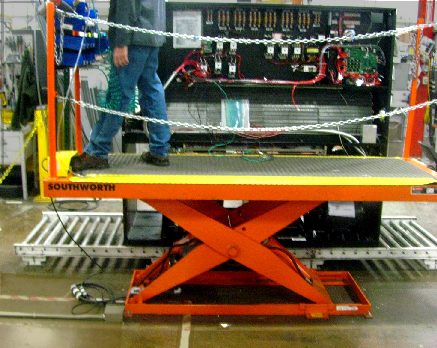 |
| Another view of same scissors lift platform | |
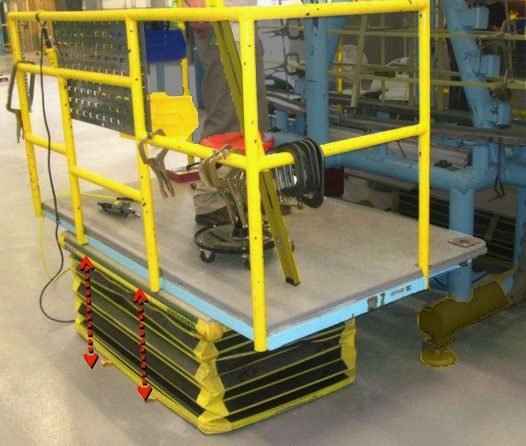 |
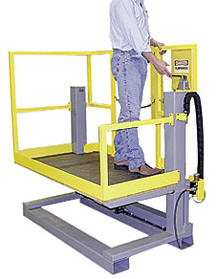 |
| Another example of platform placed on a standard scissors lift (covered with protective skirt) | Platform on post lift, fitted for movement with forklift (www.unidex.com) |
Most vendors of pallet lifts provide adaptations to convert them to personnel stands. Some vendors provide powered platforms that are specifically designed for this use.
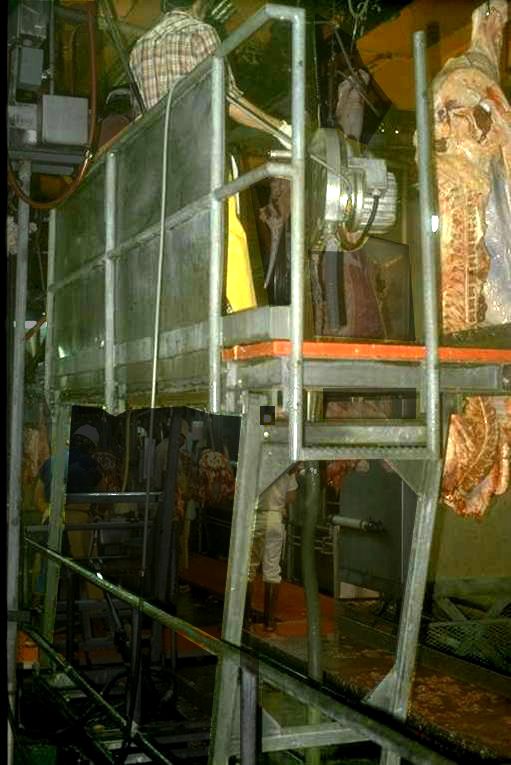 |
| Side-splitting platform in beef plant |
The meatpacking industry has used large powered platforms for decades, primarily for carcass splitting. Often two or three employees work on these platforms, each employee with a heavy saw suspended from a tool balancer. The platforms have a vertical stroke of about 10 feet. Moreover, these platforms move laterally, timed to the speed of the chain of hanging beef. Thus, the platforms drops and moves sideways simultaneously, positioning the employee in a good stable position to saw the side of beef. The platforms cycle roughly every 10-15 seconds.
Powered, small
 |
| “Linearizer”www.vestilmfg.com |
Small powered platforms can also be used. The model shown above has a surface area of 2 ft. x 3 ft. and is available with AC power, batteries, or shop air. Vertical range is 14 in.
Personnel Lifts
 |
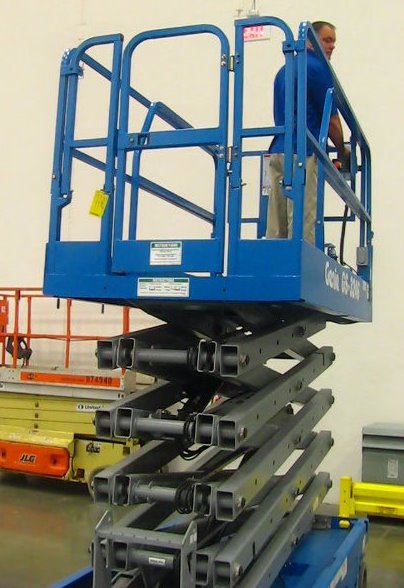 |
| Order picker | Maintenance work platform |
There are several styles of devices that are commonly used in non-production settings, but which could be used in the right circumstances. Order pickers are routinely used in distribution centers to lift employees up to high racks. Similarly, high maintenance lifts are used to access ceilings and other very high locations. See high work platforms.
Powered extending platform
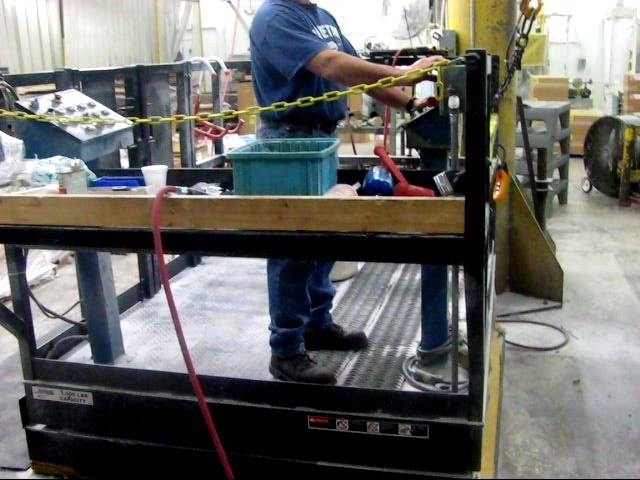 |
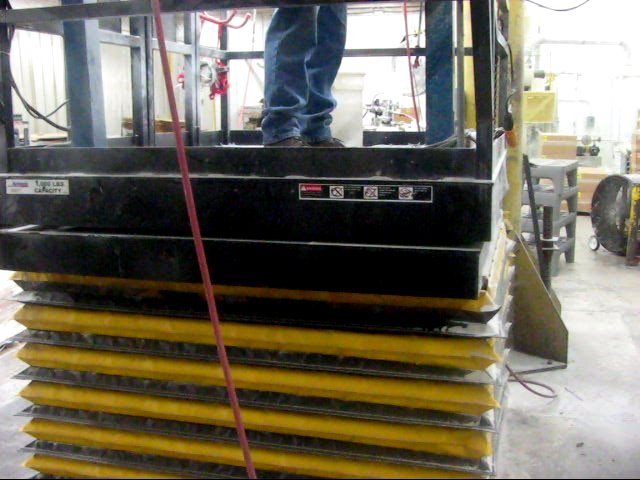 |
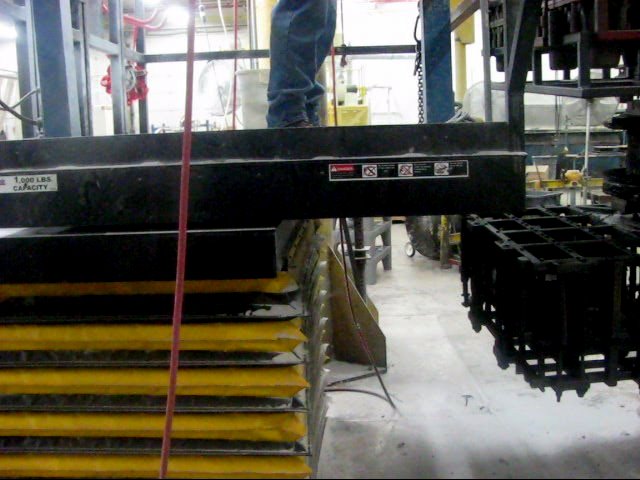 |
| Down position | Up position | Extended position |
Video clip of platform in use (custom built by www.autoquip.com)
A common need is to move in and out while working in a high position. The example shown above is a powered work platform that adjusts horizontally as well as vertically.
Overhead powered platform
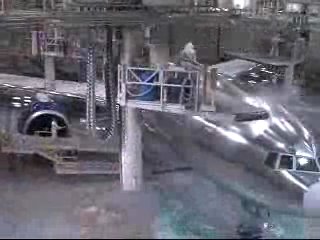 |
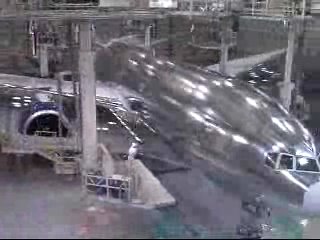 |
| Ultimate in powered platforms (see video clip) | |
Boeing uses very impressive powered overhead platforms to paint large aircraft. This video clip of Boeing platforms shows the platforms in action (in fast motion, excerpted from publicity video of Boeing 777.)
